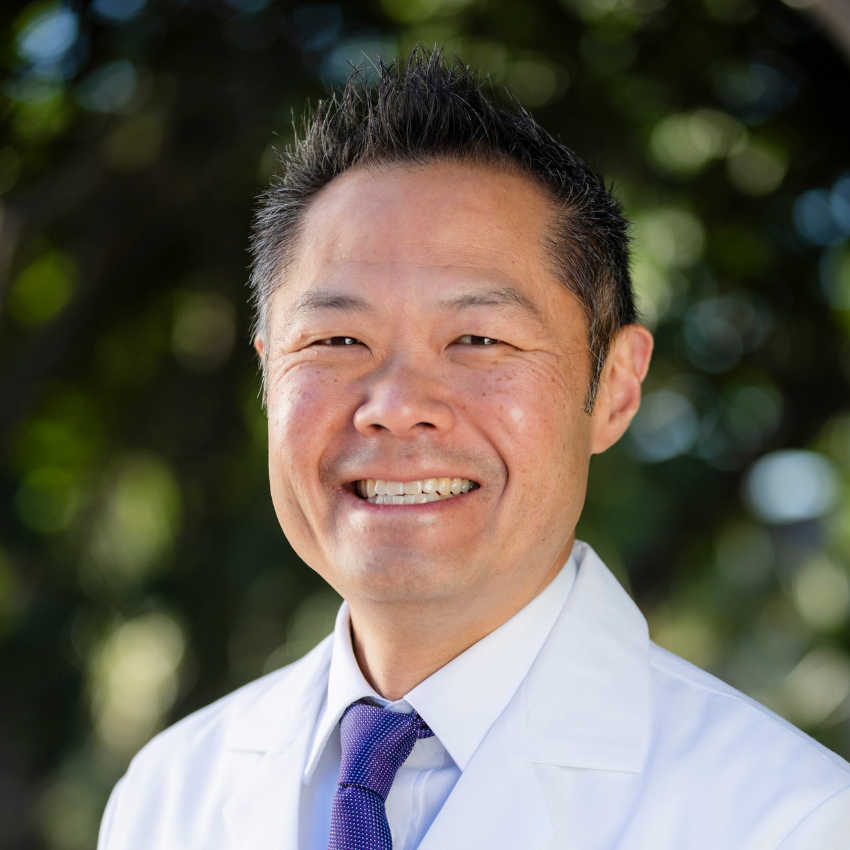Thursday, March 20
*This schedule is subject to change
Exploring the Clinical Utility of Mosaic and Segmental Aneuploid PGT-A Results.
Learning Objectives:
-
Describe how embryonic mosaicism is inferred via PGT-A and recognize the limitations of this diagnosis.
-
Examine current data surrounding outcomes of mosaic and segmental aneuploid embryo transfers, and how these may be influenced by outcome study designs and laboratory-specific platforms.
-
Differentiate between the significance of mosaic and segmental aneuploid results identified in the preimplantation embryo from those identified in prenatal and postnatal periods.
Description:
This session will dive into the clinical implications of different results following preimplantation genetic testing for aneuploidy (PGT-A), with a focus on mosaic and segmental aneuploid results. An evidence-based approach will be used to explore the predictive values of these result types and how they can impact patient counseling, decision-making, and embryo selection.
Presented by:
 Andria Besser Andria Besser
Biography: Andria Besser is a board-certified genetic counselor, Clinical Instructor at NYU Grossman School of Medicine, and the Director of Reproductive Genetics at NYU Langone Fertility Center. She obtained her Master's degree in Genetic Counseling at Mount Sinai and has been specializing in assisted reproductive technologies for the past 15 years in both clinical and laboratory settings. She is currently serving as Chair-Elect for the American Society for Reproductive Medicine’s Genetic Counseling Professional Group, was a past Chair of the National Society of Genetic Counselors' ART and Infertility Special Interest Group, and previously served on the ASRM Patient Education Committee. She has co-authored many publications about preimplantation genetic testing including several ASRM committee opinions.
Frozen Embryo Transfer: Exploring the Roles of the Corpus luteum and Relaxin in Pregnancy Outcomes
Learning Objective:
-
Recognize the Role of the Corpus Luteum in Reproductive Physiology.
-
Demonstrate knowledge about the hormonal differences between Frozen Embryo Transfer (FET) cycle protocols.
-
Examine the Influence of the Corpus Luteum on Maternal Adaptation. 4) Review recent evidence linking the absence of the corpus luteum in FET cycles to increased risks of complications such as preeclampsia.
Description:
This session delves into the intricate interplay between frozen embryo transfer (FET), the hormone relaxin, and the corpus luteum. We will explore how FET cycles, which often lack a corpus luteum, influence pregnancy outcomes through altered hormonal and physiological pathways. Attendees will gain insights into current research on relaxin's role in maternal adaptation and the implications for clinical practice, with a focus on optimizing reproductive health.
Presented by:
 Frauke von Verson Hoynck Frauke von Verson Hoynck
Biography: Frauke von Versen-Höynck is an Associate Professor and physician-scientist at Hannover Medical School in Germany. She is board-certified in Obstetrics & Gynecology, with additional board certification in Gynecologic Endocrinology and Reproductive Medicine since 2014. From 2005 to 2009, she was a postdoctoral fellow at the Magee-Womens Research Institute in Pittsburgh, USA, where she also completed a Master’s degree in Clinical Research. Between 2015 and 2018, she served as a visiting professor at Stanford University, USA, where she collaborated on a project investigating the impact of conception mode on preeclampsia risk and maternal vascular health. Her primary research interests are in maternal and child health following assisted reproductive technologies (ART). Currently, her work focuses on the role of the corpus luteum in reproductive health and pregnancy, integrating both basic and clinical research. She has authored or co-authored over 70 articles in international journals. She currently chairs the Association of University Reproductive Medicine Centers in Germany and is a member of the Board of the German Society for Gynecology and Obstetrics.
The Future of Contraception
Learning Objectives
-
Demonstrate the need for newer hormonal agents for contraception.
-
Review how the androgenic and non-androgenic progestins effect contraceptive efficacy and compliance.
-
Understand how multipurpose technologies will impact the future of contraceptive development.
Description:
A new generation of estrogens and progestins are in contraceptive development. These agents, for men and women, will have fewer adverse effects and can be used as pills, rings, injections, and transdermals. This lecture will look at the endocrinologic aspects of the older and newer hormonal compounds.
Presented by:
 Michael Thomas Michael Thomas
Biography: Dr. Michael A. Thomas is the Professor and Chair of the Department of Obstetrics and Gynecology at the University of Cincinnati College of Medicine. He is board certified in both obstetrics and gynecology and reproductive endocrinology and infertility.He graduated from Northwestern University with a degree in Radio-TV-Film, then matriculated at the University of Illinois College of Medicine. After medical school, he was a resident in obstetrics and gynecology at Wayne State University in Detroit, MI. Dr. Thomas completed his fellowship in reproductive endocrinology and infertility at the University of Cincinnati College of Medicine, where he subsequently began his faculty appointment in 1990.Since 1995, Dr. Thomas as been the Principal Investigator of the Contraceptive Clinical Trials Network of the National Institutes of Health and has performed a number of clinical research projects in areas that include contraception, menopause, infertility, and the effects of environmental toxins on reproductive function. In March 2020, Dr. Thomas was named the first African American Department Chair of a Clinical Program at the University of Cincinnati College of Medicine in its 200 year history.
Better Sperm, Better IVF?
Learning Objectives:
-
Evaluate and understand the different types of "home testing/direct to consumer" kits that have become available on a widespread basis. We will characterize their advantages and limitations, and discuss how these results should be used by reproductive medicine practitioners.
-
Define and characterize the contribution of sperm to the overall IVF process. Identify the characteristics of an IVF cycle gone wrong that might implicate a problem with sperm function.
-
Discuss the currently available methods for measuring sperm DNA fragmentation and how these results help to determine a subsequent course of action.
-
Summarize and assimilate the interventions available for DNA fragmentation modification - pre- and post-ejaculatory modifications, sperm sorting, and testicular sampling - to create an effective strategy to optimize IVF outcomes.
Description:
In the aftermath of a failed IVF cycle, the search for ways to improve any subsequent outcomes weighs heavily on the minds of all practitioners involved. Diagnostic testing, particularly the use of DNA fragmentation and its interpretation, may shed some light on sperm performance characteristics beyond a conventional semen analysis. Additionally, the advent of sperm sorting techniques potentially offer a pathway to selecting better sperm for ICSI. How to make heads or tails of it all, from the diagnostic testing to the therapeutic component will be examined.
Presented by:
 Paul Shin Paul Shin
Biography: Biosketch for Paul Shin, MDPaul R. Shin, M.D., currently serves as the Director of Reproductive Urology at Shady Grove Fertility, based in the Washington DC area. Dr. Shin was one of the first few reproductive urologists who fully integrated their practice into the broader setting of a fertility group. Paving the way for multiple others to follow, the model of having “in-house” urology services has become increasingly more common. Shady Grove Fertility now employs four full-time urologists in the mid-Atlantic area.He earned his undergraduate and medical degrees from the University of Virginia in Charlottesville, VA. Before starting his residency he completed a 1 year internship in general surgery with the Emory University Hospitals and Clinics, Atlanta, GA. He continued on to complete his residency in urology at the University of Virginia before heading to the Cleveland Clinic Foundation’s Glickman Urological Institute to complete his fellowship in male infertility. Dr. Shin has served as a board member for both SMRU and SSMR. He served as Program Chair for the 2012 SSMR meeting. He has also served on the Strategic Planning Committee for the American Society of Andrology meeting in 2014, the Urology Care Foundation’s Reproductive and Sexual Health Committee, and most recently the Continuing Medical Education Committee for ASRM. He was recently elected to the Executive Board of the Society for Male Reproduction and Urology and will assume the presidency in 2026.He and his colleagues at SGF are adjunct urology faculty at the Georgetown University School of Medicine.He currently resides with his family in Washington DC.
From Causes to Consequences: Modern and Evidence-Based Approaches to Managing Morbidity in Premature Ovarian Insufficiency
Learning Objectives:
-
To define the global prevalence, diagnostic features, and pathophysiology of premature ovarian insufficiency
-
To introduce the significant health risks (cardiometabolic, endocrine, quality of life, fertility) associated with premature ovarian insufficiency and the current barriers to implementation of systematic care
-
To present a lifecourse approach to the management of premature ovarian insufficiency that addresses disease risk mitigation and the current role of hormone replacement
Description:
Premature ovarian insufficiency (POI) describes a spectrum of declining ovarian function due to a premature decrease in initial ovarian follicle number, an increase in follicle destruction, or poor follicular response to gonadotropins. While a number of genetic, autoimmune and iatrogenic causes have been described, the majority of cases are idiopathic. There is a growing recognition of delays in POI diagnosis and the severe morbidity associated with such delays and the attenuated care that many patients receive. The primary objectives of the presentation will be to review the worldwide prevalence of POI, the clinical and endocrine diagnosis of POI, and to propose a life course approach to clinical surveillance of patients that mitigates disease risk and considers the integration of hormonal therapies.
Presented by:
 Samantha Butts Samantha Butts
Biography: Samantha Butts, MD MSCE is a Professor of Obstetrics and Gynecology and Chief of the Division of Reproductive Endocrinology and Infertility at Penn State Health and Penn State College of Medicine. In this role, she oversees an academic practice that offers a broad array of clinical services and conducts innovative clinical research. After graduating from Harvard Medical School, she competed her residency in Obstetrics and Gynecology, her fellowship in Reproductive Endocrinology and Infertility, and a Masters in Clinical Epidemiology at the University of Pennsylvania.Dr. Butts has been a leader in national and international organizations including: the Endocrine Society as a former member of the Board of Directors; the American College of Obstetrics and Gynecology (ACOG) having served as the Chair of the Gynecologic Practice Subcommittee on Reproductive Endocrinology; the Society of Reproductive Endocrinology and Infertility as a former member of the Board of Directors, the American Society of Reproductive Medicine (ASRM) as the chair of the Post Graduate program for the 2023 annual meeting, an Associate Editor of Fertility and Sterility (2021-2024), and former member of the ASRM Practice Committee. Dr. Butts is also a reproductive epidemiologist and has dedicated her research career to studying the impact of nutritional and environmental factors on fertility, factors associated with reproductive changes as women age, and the impact of race on reproductive health and access to care.
Laparoscopic Myomectomy for Intramural Fibroids-Effect of Fertility
Learning Objectives
-
Describe the effects of a laparoscopic myomectomy on subsequent fertility outcomes.
-
Characterize tips and tricks for safe laparoscopic removal of uterine fibroids.
-
Compare various tissue extraction methods during a laparoscopic myomectomy.
Description:
This session discusses whether the laparoscopic removal of fibroids has an effect on fertility. It also describes the laparoscopic technique of myomectomy, tips and tricks for tissue removal as well as patient outcomes. In experienced hands, laparoscopic myomectomy is a relatively safe procedure with low risk of side effects and can in certain cases improve fertility rates as well as reduce the risk of significant complications during a subsequent pregnancy.
Presented by:
 Jon Ivar Einarsson Jon Ivar Einarsson
Biography: Dr. Einarsson is the Founder of the Division of Minimally Invasive Gynecologic Surgery at Brigham and Women's Hospital and a Professor of Obstetrics, Gynecology and Reproductive Medicine at Harvard Medical School. He is also the past President of the AAGL. He maintains an active clinical research program, and has published approximately 200 peer-reviewed manuscripts, abstracts and book chapters. He is also an innovator and holder of 38 medical device patent applications and granted patents. His referral practice is devoted to advanced laparoscopic surgery. He also runs a private practice in Iceland, which is the highest volume endometriosis center nationally.
PGT-A debate
Learning Objectives:
-
Understand the nature of analytical validation of PGT-A testing platforms.
-
Understand the paradigm for clinical validation of any embryo diagnostic including PGT-A.
-
Understand the appropriate endpoints for determing the effectiveness of PGT-A 4. Understand the impact of patient drop out on cumulative outcomes in ART.
Description:
This debate will provide a detailed presentation of the ways which PGT-A may be accomplished so that it is safe and effective, and how it may be done so that it is not helpful and may put patients at risk for harm. They key is to use a validated analytical platform when performing the testing and to assure precise technique when collecting and sumbitting specimens. When those basic steps are done correctly, PGT-A is highly effective and may be integraed into clinical use for some patients.
Presented by:
 Richard Paulson Richard Paulson
Biography: Dr. Richard Paulson holds the Alia Tutor Chair in Reproductive Medicine and is Professor and vice-chair in the Department of Obstetrics and Gynecology at the University of Southern California. He is Chief of the Division and Director of the Fellowship in Reproductive Endocrinology and Infertility. He received his MD degree from UCLA and an MS degree in Biostatistics and Study Design from USC. Dr. Paulson is past president of the American Society for Reproductive Medicine, of the Pacific Coast Reproductive Society, the Society for Reproductive Endocrinology and Infertility and the Los Angeles Obstetrical and Gynecological Society. He is the Editor-in-Chief of “Fertility & Sterility Reports.” Dr. Paulson has authored over 250 scientific articles and has received more than 35 research awards for scientific presentations.
 Richard Scott Richard Scott
Biography: Richard Scott, MD, HCLD/ALD is a Reproductive Endocrinologist, Embryologist, and Molecular Geneticist whose research interests have focused on understanding embryonic reproductive competence. Dr Scott did his fellowship training at Jones Institute for Reproductive Medicine at Eastern Virginia Medical School. He has led extensive studies regarding ovarian reserve, embryonic aneuploidy, genomic instability leading to chromosomal segmental abnormalities, embryonic endometrial dysnchrony, and the impact of mitophagy on reproductive aging. Dr Scott has more than 350 publications. Dr Scott is the former CEO of IVIRMA Global, an Associate Editor of Fertility and Sterility, and is an Adjunct Professor at the University of South Carolina – Greenville School of Medicine and Yale University. He is also the scientific director at the Foundation for Embryonic Competence, a not-for-profit dedicated to studying embryonic reproductive potential and enhancing clinical outcomes.
|